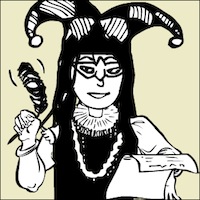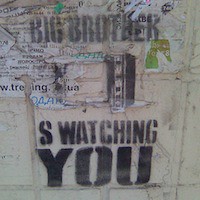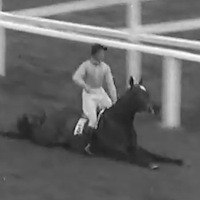Babe Ruth - Baseball Legend

Baseball has become the all-American pastime. What’s a better example of an all-American team than the New York Yankees? Now, now, calm down. I know there are plenty of people who despise the Yankees. I happen to like them. I like them as much as I like baseball, which, admittedly, isn’t all that much. But of the teams available in the Major League, I like the Yankees the best.
Of course, the Yankees of today are nothing like the Yankees of the golden age of baseball. And no other Yankee player can ever match the skill of one of the greatest players of all time: George Herman “Babe” Ruth, Jr. During his career he set many records, most of which remain to this day. His most notable record of 714 career home runs lasted from 1935 until 1974, when Hank Aaron hit his 715th career home run.
“The Babe” began his professional baseball career in 1914, at age 19. Jack Dunn, a scout, watched Ruth pitch and hit, and he knew that he had a winner on his hands. He contracted Ruth for the Baltimore Orioles, the minor league farm club for the Boston Red Sox. Since Dunn was widely known for his scouting ability, the newest player of his became known as “Jack’s New Babe,” or “The Babe.” After he had spent only five months with the Orioles, the Red Sox bought out Ruth’s contract and he became a major leaguer.
Ruth’s hitting record is undoubtedly impressive, but just as impressive is his pitching average. In his first World Series in 1916, he came out to pitch in Game 4. He started off by yielding one run in the first inning, but went on to pitch 13 scoreless innings for the 2-1 Red Sox victory. According to the Official Babe Ruth website, “the 14-inning gem stands as the longest complete game in World Series history.”
In 1918, Ruth, again, set an amazing pitching record. With his nine scoreless innings of Game 1 of the 1918 World Series, his eight scoreless innings of Game 4, and the 13 shutout innings of the 1916 World Series, according to the Official Babe Ruth website, he had “29 2/3 scoreless World Series innings, breaking Christy Mathewson’s record. This amazing record stood for 43 years.” When I did the math, I came up with 30, but not knowing much about baseball, I may be misunderstanding the shutout innings of 1916. At any rate, the 1918 World Series was the last series or pennant that the Boston Red Sox would win until 2004. Conversely, the Yankees (to whom Ruth was sold in 1919) would go on to win 39 American League Pennants and 26 World Series Titles. The papers would call the phenomenon “the Curse of the Bambino.”
May 30, 1935, marked the end of an era. It was the last game in which Babe Ruth played – and it was for the Boston Braves. It was not as impressive a year as his earlier days had been, but even still, Babe Ruth’s legend left an indelible mark on American baseball. His career averages helped to make him one of the first five inducted into the Baseball Hall of Fame in 1936. His record career batting average of .342 ranks him a tie for the 9th highest on record. Ty Cobb was number one with a BA of .366. Ruth’s record of 714 career home runs was only broken by Hank Aaron in 1974. Aaron would go on to an astounding 754 home runs in his career – a record only much later broken by Barry Bonds, with some controversy surrounding it. And lastly, Babe Ruth’s career RBI record of 2,217 was the top in Major League baseball until Hank Aaron’s career total RBI hit 2,297.
In 1946, Ruth began having some health troubles. Doctors discovered a malignant tumor in the back of his neck that had wrapped around his carotid artery. He struggled for two years against the cancer, but finally succumbed on August 16, 1948. It truly was the end of an era.
Of course, the Yankees of today are nothing like the Yankees of the golden age of baseball. And no other Yankee player can ever match the skill of one of the greatest players of all time: George Herman “Babe” Ruth, Jr. During his career he set many records, most of which remain to this day. His most notable record of 714 career home runs lasted from 1935 until 1974, when Hank Aaron hit his 715th career home run.
“The Babe” began his professional baseball career in 1914, at age 19. Jack Dunn, a scout, watched Ruth pitch and hit, and he knew that he had a winner on his hands. He contracted Ruth for the Baltimore Orioles, the minor league farm club for the Boston Red Sox. Since Dunn was widely known for his scouting ability, the newest player of his became known as “Jack’s New Babe,” or “The Babe.” After he had spent only five months with the Orioles, the Red Sox bought out Ruth’s contract and he became a major leaguer.
Ruth’s hitting record is undoubtedly impressive, but just as impressive is his pitching average. In his first World Series in 1916, he came out to pitch in Game 4. He started off by yielding one run in the first inning, but went on to pitch 13 scoreless innings for the 2-1 Red Sox victory. According to the Official Babe Ruth website, “the 14-inning gem stands as the longest complete game in World Series history.”
In 1918, Ruth, again, set an amazing pitching record. With his nine scoreless innings of Game 1 of the 1918 World Series, his eight scoreless innings of Game 4, and the 13 shutout innings of the 1916 World Series, according to the Official Babe Ruth website, he had “29 2/3 scoreless World Series innings, breaking Christy Mathewson’s record. This amazing record stood for 43 years.” When I did the math, I came up with 30, but not knowing much about baseball, I may be misunderstanding the shutout innings of 1916. At any rate, the 1918 World Series was the last series or pennant that the Boston Red Sox would win until 2004. Conversely, the Yankees (to whom Ruth was sold in 1919) would go on to win 39 American League Pennants and 26 World Series Titles. The papers would call the phenomenon “the Curse of the Bambino.”
May 30, 1935, marked the end of an era. It was the last game in which Babe Ruth played – and it was for the Boston Braves. It was not as impressive a year as his earlier days had been, but even still, Babe Ruth’s legend left an indelible mark on American baseball. His career averages helped to make him one of the first five inducted into the Baseball Hall of Fame in 1936. His record career batting average of .342 ranks him a tie for the 9th highest on record. Ty Cobb was number one with a BA of .366. Ruth’s record of 714 career home runs was only broken by Hank Aaron in 1974. Aaron would go on to an astounding 754 home runs in his career – a record only much later broken by Barry Bonds, with some controversy surrounding it. And lastly, Babe Ruth’s career RBI record of 2,217 was the top in Major League baseball until Hank Aaron’s career total RBI hit 2,297.
In 1946, Ruth began having some health troubles. Doctors discovered a malignant tumor in the back of his neck that had wrapped around his carotid artery. He struggled for two years against the cancer, but finally succumbed on August 16, 1948. It truly was the end of an era.
You Should Also Read:
First In Space - Yuri Gagarin
Nine Russian Hikers Found Dead
Founding of Alcoholics Anonymous

Related Articles
Editor's Picks Articles
Top Ten Articles
Previous Features
Site Map
Content copyright © 2023 by Christa Mackey. All rights reserved.
This content was written by Christa Mackey. If you wish to use this content in any manner, you need written permission. Contact Lane Graciano for details.







